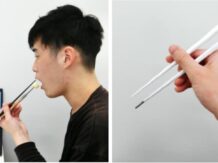While anyone who has bought a 3D display and took a bit of a run for it might think it’s already buried in technology, it’s actually still evolving. This time, in the Optica journal, we can read about the work of scientists from Soochow University, who developed an impressive 3D display that does not require glasses.
A new 3D display that does not require glasses could bring technology back into favor on the market … if scientists make it better
The uniqueness of this display boils down to the fact that it is built by a series of nano-structured lenses. They are responsible for generating more realistic images that can be viewed from a greater distance, so they solve one of the two main problems of 3D displays that do not require glasses, i.e. narrow viewing angles and the requirement to keep a small distance from the screen.
Also read: Durable as metal and light as foam. This new material absorbs energy surprisingly well
However, the project is still tormented by narrow viewing angles of only 9 degrees, requiring the viewer to keep the position and head practically in the same place. Scientists defend their idea, believing that this problem can be circumvented by modifying the nanostructures on the lenses. Now, however, the team’s priority is not to research better ways to etch these nanostructures.
If you are wondering what these nanostructures are, we are in a hurry to explain. They are the key element of the entire system and are present in the new flat lens covered with nanoscale structures that diffuse light in a specific way. The combination of several such lenses with different patterns allows you to get multiple views in the same light field, which generates the illusion of a 3D image.
Also read: NASA warns SpaceX is not listening. Another 48 Starlink satellites were launched
The effectiveness of this approach was confirmed in a prototype system, which used a 10 cm display with a resolution of 568 x 320 pixels per eye. The team says the device was able to generate 3D images that could be viewed from 24 to 90 cm away, the luminous efficacy reached 82%, and the moments where the images from each eye interpenetrate was reduced to less than 26 percent. .















